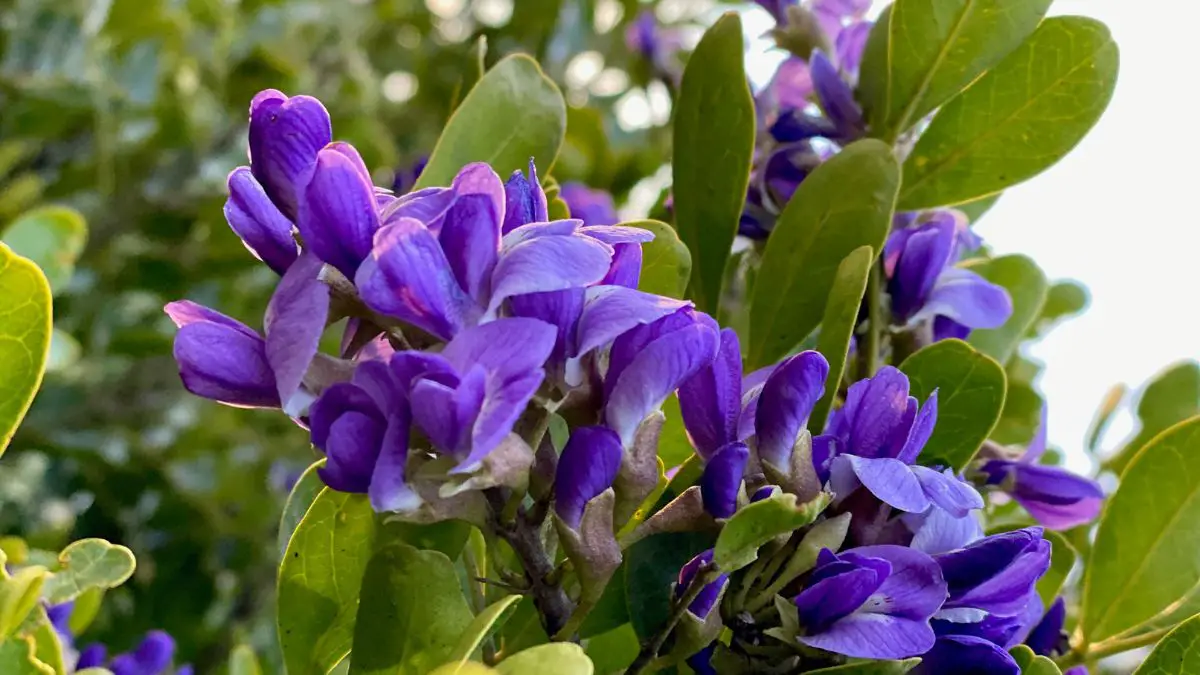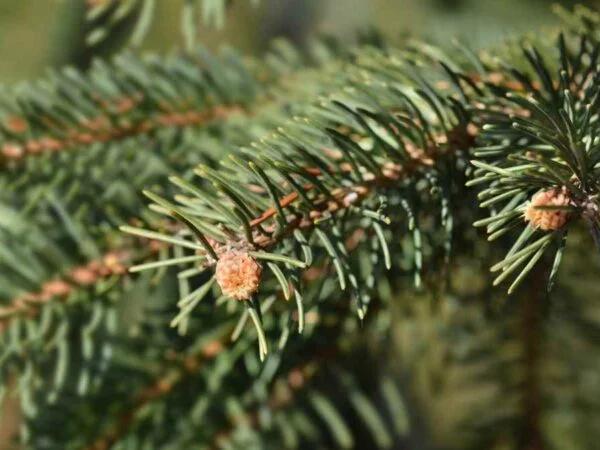
Delve into the enchanting world of mountain laurels, rhododendrons, with our comprehensive guide on how to plant these exquisite flowering shrubs, cultivars. Mountain laurels, native to the eastern United States, have long been cherished for their stunning blooms and evergreen foliage. By following our expert tips and steps, you can cultivate your very own vibrant mountain laurel garden oasis. Learn the ideal planting conditions, essential care routines, and nurturing techniques to ensure your mountain laurels thrive in any landscape. Join us on this botanical journey and unlock the secrets to successfully planting and maintaining these captivating ornamental plants.
Overview of Mountain Laurel
Evergreen Shrub
Mountain laurel, known scientifically as Kalmia latifolia, is a stunning evergreen shrub that graces gardens with its vibrant blooms. It belongs to the heather family and boasts lush, leathery leaves year-round.
Native Habitat
This captivating plant is native to the eastern United States, thriving in regions like the Appalachian Mountains. Its natural habitat includes wooded areas, slopes, and rocky hillsides where it adds a touch of elegance to the landscape.
Ideal Conditions for Planting
Light Needs
Mountain laurel thrives in dappled sun or partial shade, essential for optimal growth and blooming. Avoiding direct sunlight is crucial to prevent leaf burn, ensuring the plant's health. However, excessive shade can result in reduced flowering, impacting its visual appeal.
Soil and Water
For successful growth, mountain laurels require moist, acidic soil, providing them with the necessary nutrients. It is vital to choose well-drained soil to prevent root rot, a common issue affecting these plants. Regular watering is essential to maintain the soil's moisture levels, promoting healthy growth.
Temperature and Humidity
Mountain laurels prefer cool to moderate climates, thriving in such conditions. They also thrive in areas with high humidity levels, which mimic their natural habitat. Protecting these plants from extreme heat is crucial as it can cause stress and hinder their development.
How to Plant Mountain Laurel
Selecting a Site
When planting mountain laurel, ensure the site has moist, acidic soil and partial shade for optimal growth. Look for suitable locations like native landscapes, woodland areas, or butterfly gardens. It's crucial to plant away from homes due to its flammability rating.
Planting Steps
To plant mountain laurel, start in early spring to early summer for best results. Begin by digging a hole twice the size of the root ball and ensure proper backfilling around the roots. Consider the spacing requirements and plant in clusters to mimic natural growth patterns.
Watering After Planting
After planting, it's essential to water newly planted mountain laurel regularly to help establish strong roots. Provide deep watering immediately after planting to encourage healthy root development. Keep an eye on soil moisture levels during the first few weeks post-planting.
Caring for Mountain Laurel
Watering Routine
Mountain laurel requires consistent moisture to thrive, making a well-established watering routine crucial. During dry spells, regular watering is essential to prevent the plant from experiencing stress. Adjust the watering frequency based on weather conditions to ensure optimal growth and health.
Applying Fertilizer
When it comes to applying fertilizer to mountain laurel, opt for a slow-release formula once a year. It is important to choose a fertilizer specifically designed for acid-loving plants, such as mountain laurel. Over-fertilization should be avoided to prevent nutrient imbalances that can harm the plant.
Pruning Techniques
After blooming, employ proper pruning techniques on mountain laurel to maintain its shape and overall health. Removing spent flowers and seed heads is crucial to stimulate new growth and enhance the plant's appearance. Always use sharp, clean tools while pruning to prevent the spread of diseases.
Propagating Mountain Laurel
Cuttings Method
To propagate mountain laurel through cuttings, select a healthy stem from the parent plant. Cut a 4-6 inch piece just below a leaf node using sharp, clean shears. Remove the leaves from the lower half of the cutting to expose nodes for root growth. Dip the cut end in rooting hormone to encourage root development. Plant the cutting in a container filled with well-draining soil and keep it moist but not waterlogged. Place the container in a warm, bright location with indirect sunlight. After several weeks, roots will begin to develop, signaling successful propagation.
Seed Propagation
Seed propagation of mountain laurel involves collecting mature seed pods in late summer or early fall. Extract the seeds from the pods and soak them in water for 24 hours to soften their hard coating. Fill small pots with a mixture of peat moss and perlite for planting the seeds. Plant each seed about 1/4 inch deep in the soil mixture and lightly cover them. Keep the soil consistently moist but not soggy and place the pots in a warm location with indirect sunlight. Germination may take several weeks to months, so be patient while waiting for seedlings to emerge.
Types of Mountain Laurel
Elf
Elf is a popular variety of mountain laurel, known for its compact size and delicate pink flowers. It blooms in late spring, adding a touch of elegance to any garden.
Minuet
Minuet mountain laurel features dark green foliage and stunning rose-pink buds that open into beautiful white flowers. It thrives in partial shade and well-drained soil.
Olympic Fire
Olympic Fire is a striking mountain laurel cultivar with vibrant red buds that bloom into fiery red flowers. This variety adds a bold pop of color to your landscape.
Peppermint
Peppermint mountain laurel is named for its unique pink and white striped flowers, resembling the peppermint candy. It blooms profusely in late spring, attracting pollinators to your garden.
Snowdrift
Snowdrift mountain laurel is prized for its pure white flowers that resemble snowflakes. This variety thrives in acidic soil and partial shade, creating a serene atmosphere in your garden.
Tinkerbell
Tinkerbell mountain laurel is a charming dwarf variety with dainty pink flowers that bloom abundantly in spring. Its compact size makes it perfect for small gardens or containers.
Companion Plants for Mountain Laurel
Solomon's Seal
omon's Seal, scientifically known as Polygonatum, is a fantastic companion plant for mountain laurel. It thrives in similar conditions and adds an elegant touch to your garden. This plant boasts arching stems with delicate white flowers that bloom in late spring. The foliage complements the glossy leaves of the mountain laurel beautifully.
Planting Solomon's Seal alongside your mountain laurel can create a visually appealing contrast in textures and colors. Its graceful appearance enhances the overall aesthetic of your garden. Solomon's Seal is a low-maintenance plant, making it an excellent choice for beginner gardeners.
Goatsbeard
Another excellent companion plant for mountain laurel is Goatsbeard, also known as Aruncus dioicus. This plant features feathery white blooms that resemble plumes, creating a stunning visual impact when planted near mountain laurels. Goatsbeard thrives in partial shade, similar to the preferred growing conditions of mountain laurels.
The contrasting textures and heights of Goatsbeard and mountain laurel create a dynamic landscape design. The airy plumes of Goatsbeard complement the dense clusters of mountain laurel flowers, adding depth and interest to your garden. This combination provides a natural and harmonious look that will delight any observer.
Wintergreen
Wintergreen, scientifically named Gaultheria procumbens, is a versatile ground cover that pairs well with mountain laurel. This evergreen plant offers glossy green leaves and vibrant red berries, adding color to your garden throughout the year. Wintergreen thrives in acidic soil, similar to the requirements of mountain laurels.
Planting Wintergreen around your mountain laurels creates a lush carpet of greenery that highlights the beauty of both plants. The red berries of Wintergreen add a pop of color against the dark green foliage of the mountain laurels, enhancing the visual appeal of your garden. Moreover, Wintergreen's ability to thrive in shade makes it an ideal companion for mountain laurels in woodland settings.
Troubleshooting Common Issues
Pests and Diseases
Mountain laurels are generally resilient plants, but they can still fall victim to a few pests and diseases. One common issue is lace bugs, which can cause yellow stippling on the leaves. To combat this, regularly inspect the undersides of leaves for any signs of infestation. Another potential problem is leaf spot, characterized by dark spots on the foliage. To prevent this, ensure proper air circulation around the plant and avoid overhead watering.
Scale insects are another nuisance that may target mountain laurels. These pests appear as small bumps on stems and leaves, sucking sap from the plant. Combat scale insects by pruning affected areas and applying horticultural oil. Watch out for powdery mildew, a fungal disease that presents as white powdery patches on leaves. To tackle this issue, ensure good air circulation and consider fungicidal treatments if necessary.
Potting and Repotting
When it comes to potting mountain laurels, choose a container that provides adequate drainage to prevent waterlogging. Use a well-draining soil mix with a slightly acidic pH level for optimal growth. Repotting should be done every 2-3 years to refresh the soil and provide more space for root growth. During repotting, gently loosen the roots and place the plant in a slightly larger pot.
Overpotting can lead to waterlogged soil, causing root rot, so it's crucial to select an appropriately sized container. Ensure that the new pot has drainage holes at the bottom to allow excess water to escape. When repotting, be mindful not to damage the roots excessively, as this can hinder the plant's growth.
Frequently Asked Questions
Best Time
When is the best time to plant mountain laurel? Plant in spring or fall for optimal growth and establishment.
Ideal Location
Choose a spot with well-draining soil and partial shade for your mountain laurel.
Watering System
Maintain a consistent watering schedule to keep the soil moist but not waterlogged.
Pruning Tips
Regularly prune damaged or dead parts of the plant to promote healthy growth and flowering.
Sunlight Needs
Mountain laurels thrive in areas with dappled sunlight or partial shade, avoiding direct afternoon sun.
Blooming Season
Enjoy the stunning flowers of mountain laurels in late spring to early summer, adding beauty to your garden.
Closing Thoughts
You've learned the ins and outs of planting and caring for mountain laurel. By following the steps outlined, you can ensure your mountain laurel thrives in your garden. Remember to provide the ideal conditions, proper care, and consider companion plants to create a flourishing environment for your mountain laurel.
Now it's time to get your hands dirty and start planting your very own mountain laurel. Enjoy the beauty and elegance this stunning plant brings to your outdoor space. Happy planting!
Frequently Asked Questions
How often should I water my mountain laurel plant?
Water mountain laurels deeply once a week, ensuring the soil is well-drained. During hot weather or dry spells, increase watering frequency. Avoid overwatering to prevent root rot.
When is the best time to plant mountain laurel?
The ideal time to plant mountain laurel is in the spring or fall when the weather is mild. Planting during these seasons allows the shrub to establish its roots before extreme temperatures.
How can I protect my mountain laurel from pests and diseases?
To protect your mountain laurel, inspect it regularly for signs of pests or diseases. Use organic pesticides if needed and ensure proper air circulation around the plant to prevent common issues.
Should I fertilize my mountain laurel, and if so, how often?
Fertilize your mountain laurel once a year in early spring using a balanced fertilizer specifically formulated for acid-loving plants. Avoid excessive fertilization as it can harm the plant.
Can I grow mountain laurel in containers?
Yes, you can grow mountain laurel in containers as long as the container has good drainage holes and is filled with acidic soil. Ensure the plant receives adequate sunlight and regular watering while potted.
Image Source: Paid image from CANVA





